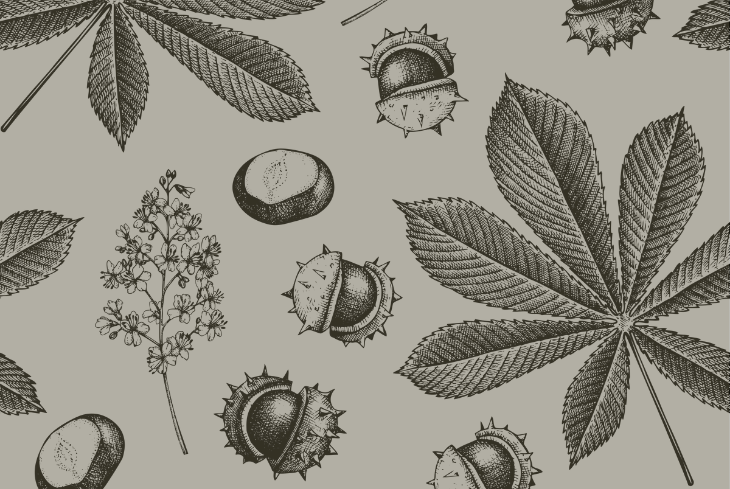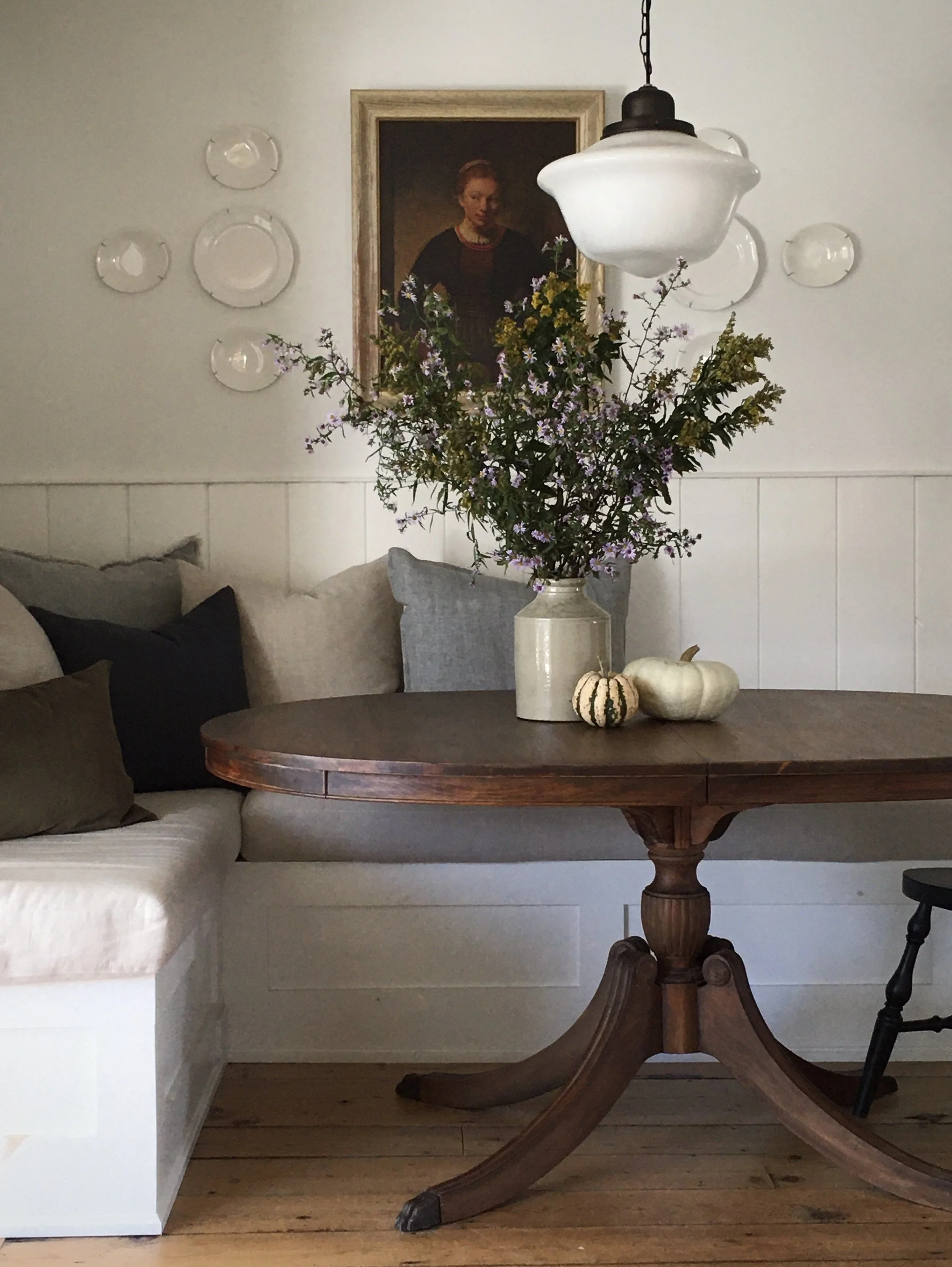 |
Each June the huge chestnut tree on the front lawn of our East Coast house in Nova Scotia puts on a spectacular show. Spring arrives late in the Maritimes so its usually June before its gigantic leaves open up, and then immediately after, the cone shaped blooms appear. This majestic old tree has a huge canopy that reaches low to the ground and spans at least 30 feet wide and when its at its peak by mid-June, its a stunning sight, between that and the sprawling lawn it creates a view of brilliant green out all the front windows. Sadly the white blooms on the tree barely last 2 weeks so I try to enjoy every moment of them while I can. I'm really not into DIY posts on this blog but I wanted to share this small project which I just did for my own house because it was so easy and turned out so beautiful.
This species is known as a horse chestnut tree, the leaves are enormous with five or seven petals, they kind of have a tropical palm-like vibe to them (which is probably why I love them so much). Last June when the tree was blooming in all its glory, I was inspired to preserve its beauty somehow as I'm so in love with this gorgeous foliage. I've always had a passion for natural elements and found objects that I always come home from a walk or outing with my pockets full of rocks, shells, branches, bark or anything I find to be beautiful or interesting.
The idea of framing these chestnut leaves had been in my head for a long time so last June when they were at their peak I decided to give leaf pressing a try. I absolutely love botanical prints and have installed them in client's homes but I've never pressed leaves before so this entire project was/is an experiment. I picked about a dozen or so perfect looking specimens hoping that at least a few of them would turn out. BF quickly made a press for me using multiple layers of plywood, I carefully placed the cuttings between sheets of cardboard and paper towels layered between the plywood, we clamped it all down and let time do its thing. After about a month or so I took them all out and moved them into flat drawers where they stayed until just a couple of weeks ago.
My plan was to hang a series of botanicals in my new kitchen and finally ….. finally (!) a year later as the kitchen is slowly finishing up, I was ready to get these leaves framed! After a lengthy search for some affordable ready to hang frames I decided on these simple black gallery frames from Walmart that I found online.
Black Gallery Frame 16 x 20
There are very few retail options available in Nova Scotia outside of Halifax, and I'm sure anyone who lives in rural Canada can relate - basically your in-store shopping options are Walmart, Canadian Tire, Home Hardware, the grocery store and the drug store. Online shopping is great but there's always a 2 or 3 week wait plus exchange rates and shipping charges,,,and as I was experimenting here, I really wanted to be able to try one first before purchasing 9 of them, and I also didn't want to drive 3 or 4 hours to purchase one trial frame. I considered Ikea's Ribba frame which I've used many times but it wasn't available to buy online in the size I needed and ultimately I really wanted something a bit more traditional. My search didn't net too many options on that front though so on my next visit to the nearest Walmart (its the only place I can get the cat food my diabetic cat likes, so I make regular trips) I checked out the frame in person and decided I could make it work. They didn't have the size I needed in stock but the best part was, I could order them online and they arrived at my door in 4 days, free shipping. (note, this is not a sponsored post, I'm just sharing the facts and also, I had no idea you could shop on-line with Walmart).
Because I didn't really want a modern frame, I also purchased some gold metallic acrylic paint, again, from Walmart, so I could experiment with making the frame look less new, less modern. I used a foam brush to apply the gold paint along the inside and outside edges of the frames by just dipping, dabbing off excess, then dragging the brush up and down the edge. It just took that *new* off the shelf department store frame and made it look a bit more like a custom frame moulding.
The hand painted gold edge gave the stock frames an aged look and I loved the effect. It took about 15 minutes to do all frames. (The fabric looks like it has stripes in this photo but it doesn't, its just the reflection of the beam ceiling seen on the glass)
Here's a sneak peak of the collection in progress. I was able to use all the frames I pressed which filled 6 frames but I'm planning on pressing some ferns and wild flowers this month which I'll add to this grouping later in the summer. I should point out the glass is regular glass, its not non-glare and its not UV glass which means they shouldn't be hung anywhere that's exposed to direct sunlight or the fabric and leaves will be effect by fading.
If you're looking for a super easy, fun and inexpensive way to create some personalized (and beautiful) wall art this is a wonderful way to display some of your prized specimens from your own garden or keepsakes from a favorite destination not to mention a great project to do with your kids. Anything that grows can be pressed - flowers, leaves, herbs, moss and you can mount them in so many different and interesting ways. I'm so thrilled with how the chestnut leaves turned out, I already have the press ready for some ferns and wild flowers but after that, what I really can't wait to try is a series of seaweed which is plentiful on our beach and just a great excuse to go for even more beach walks.
All Pohtos: Carol Reed




























